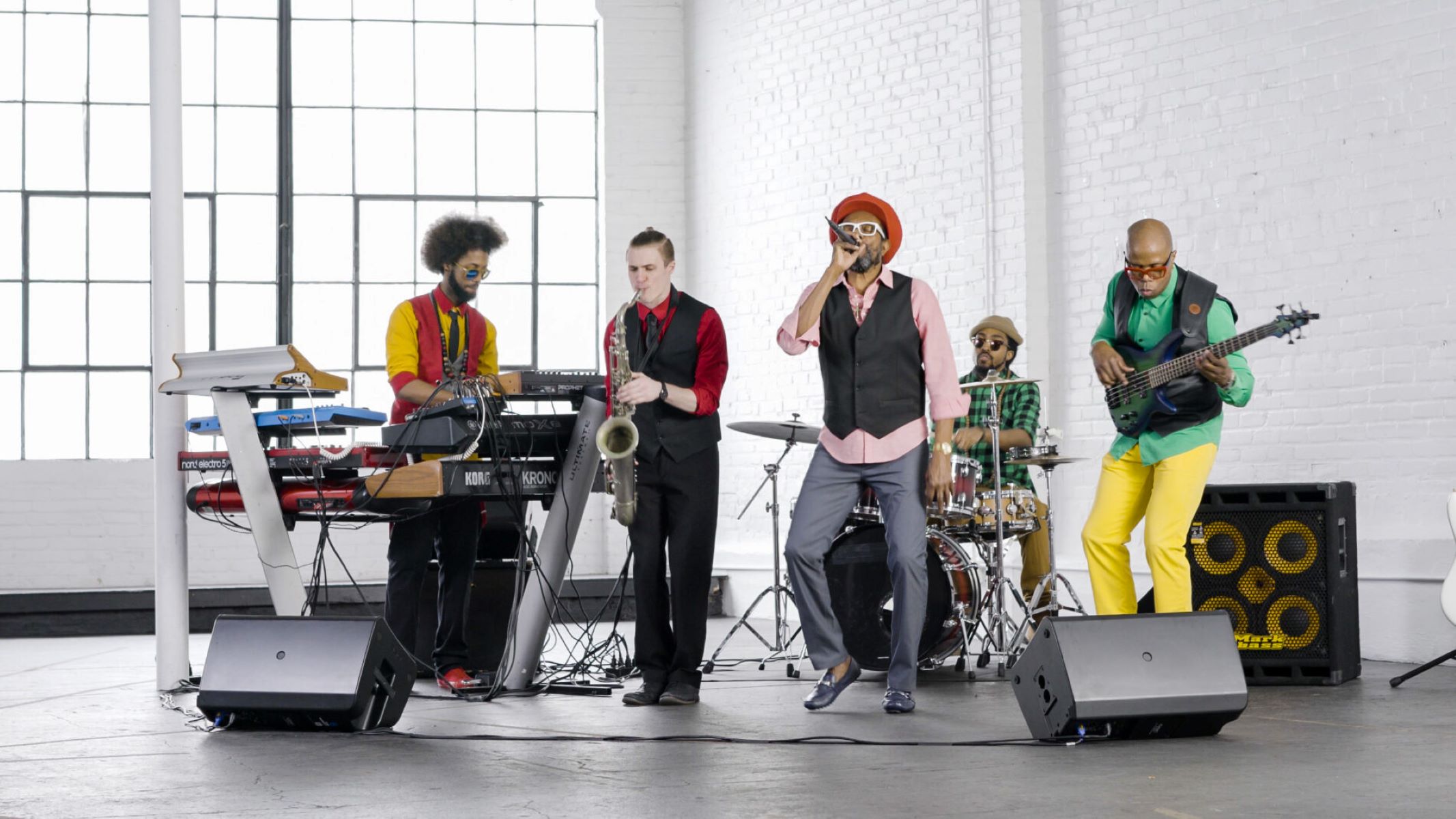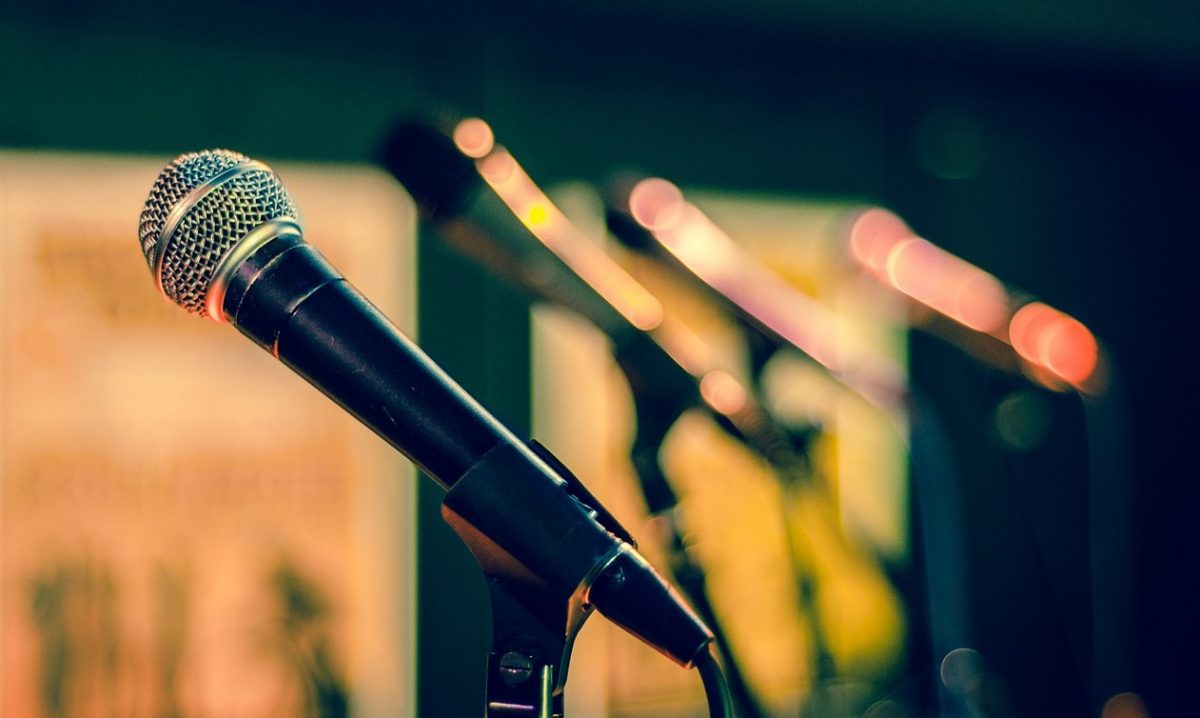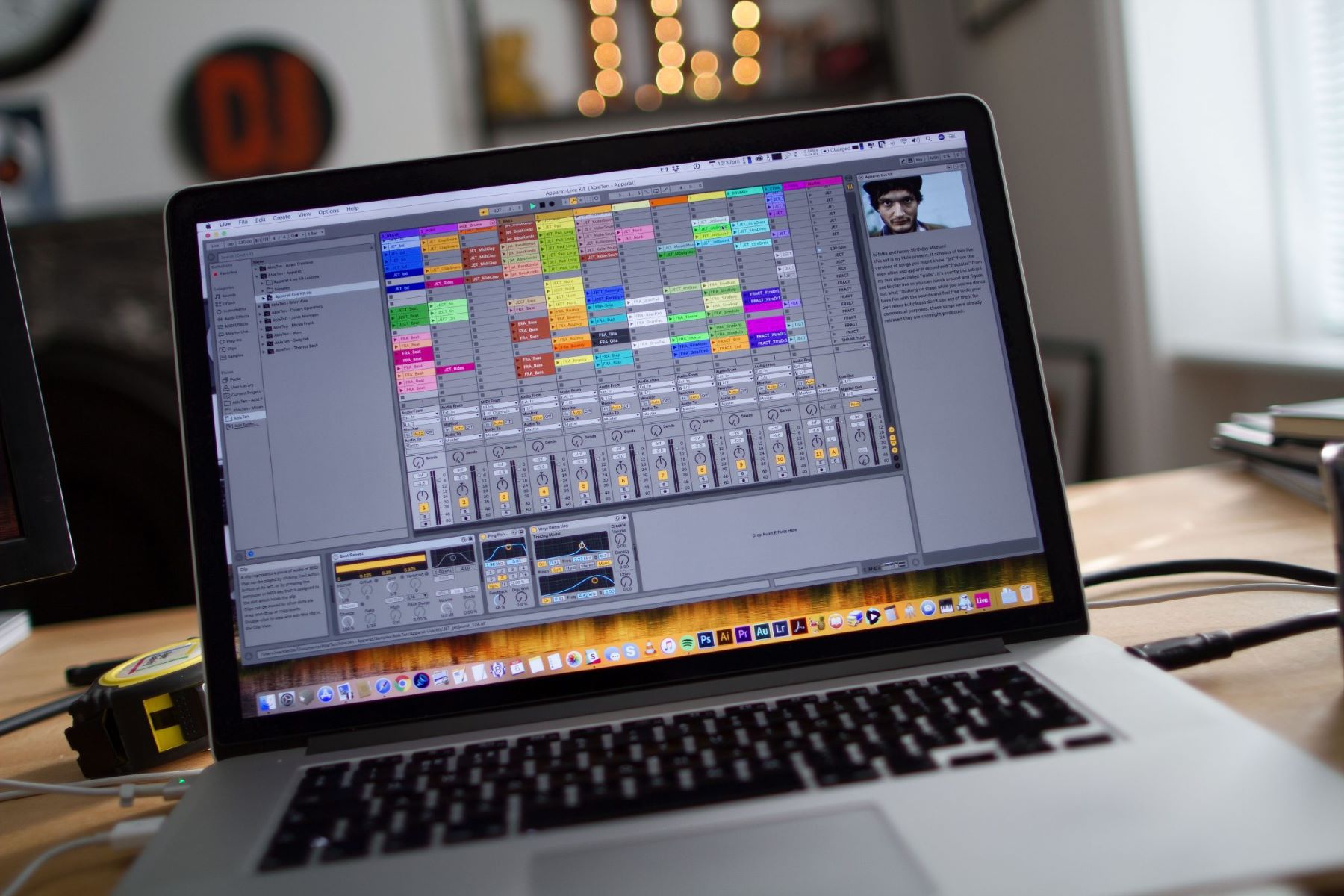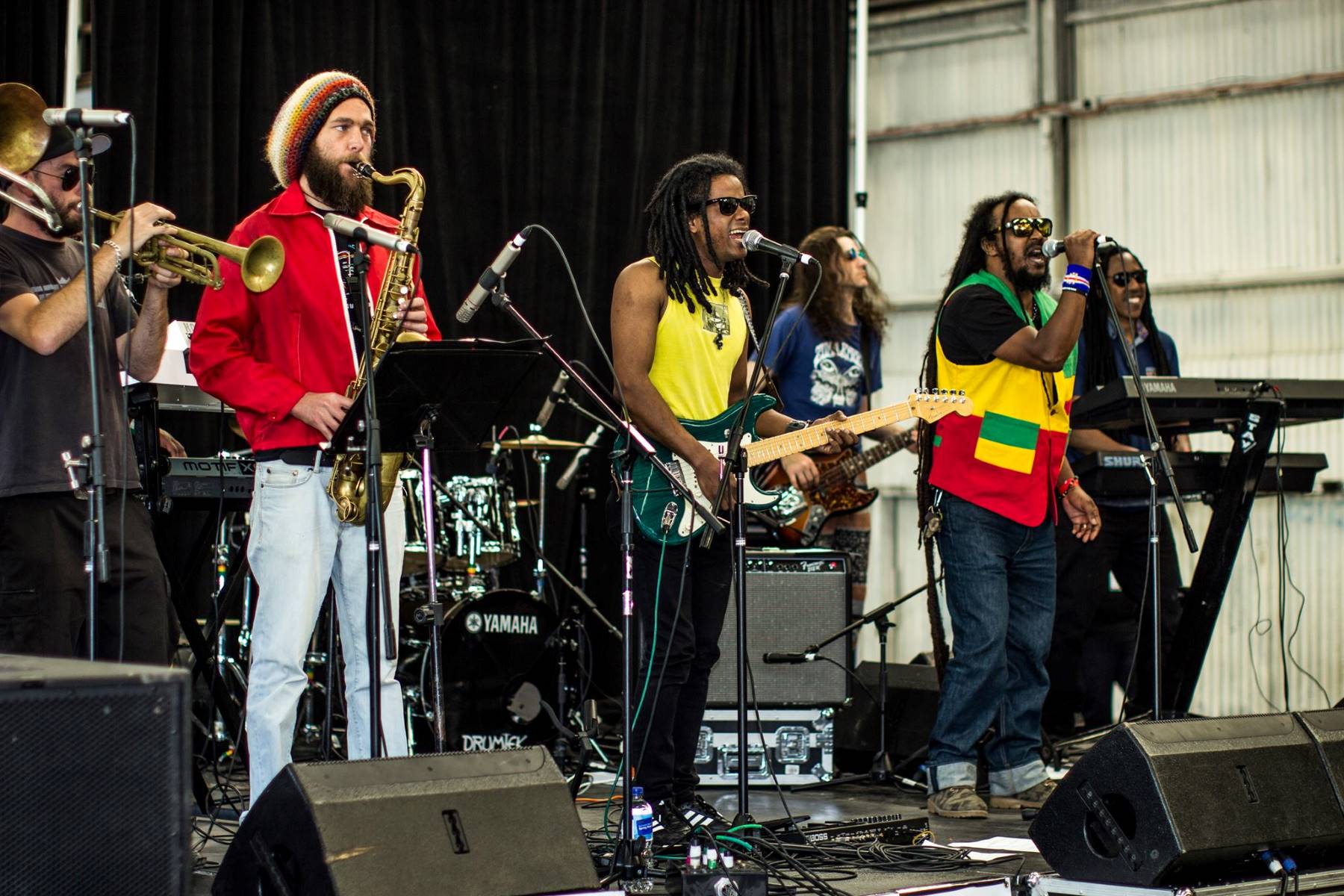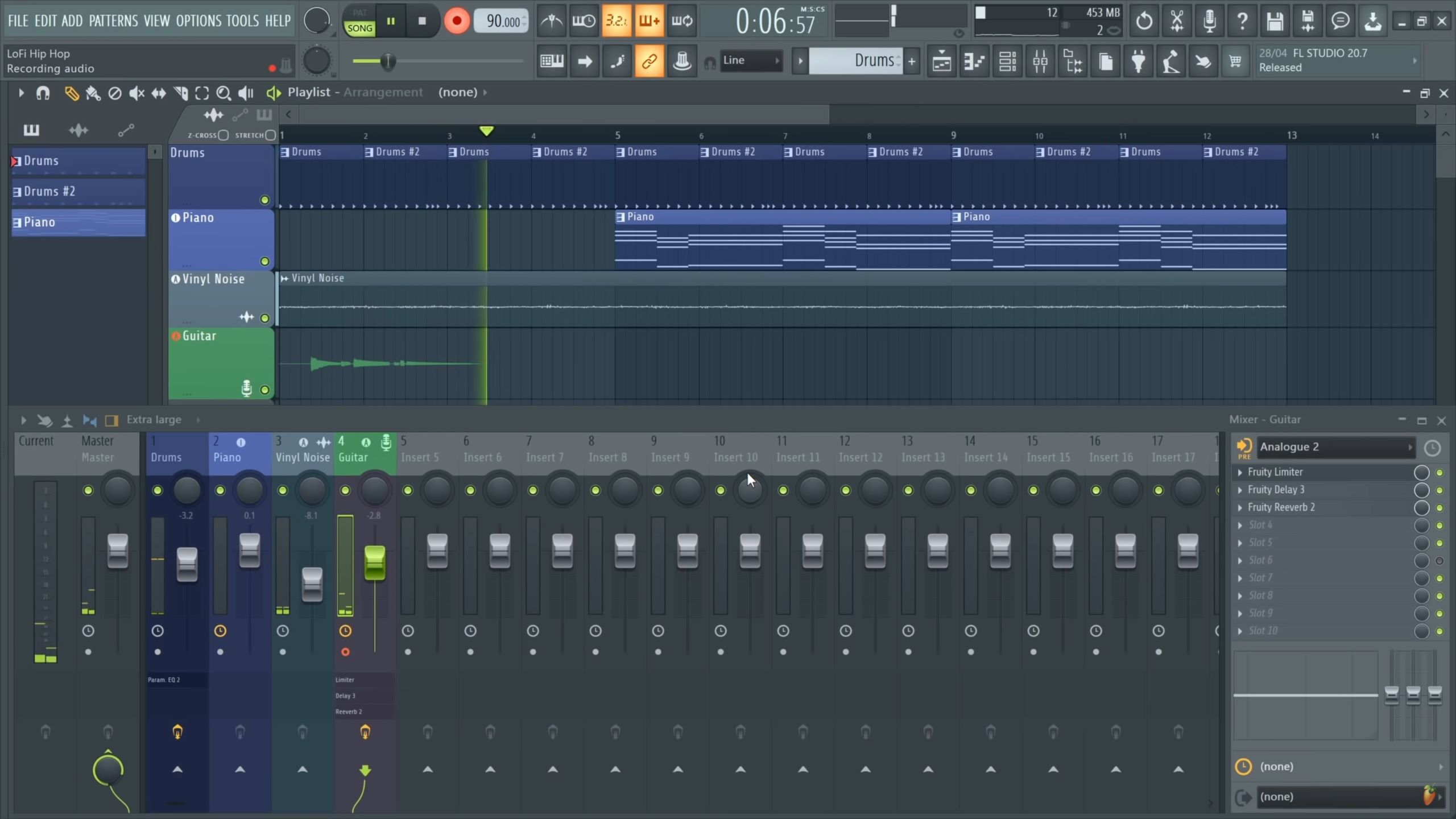

Reggae
How To Sing Reggae
Modified: January 22, 2024
Discover the soulful rhythms of Reggae with our ultimate guide on how to sing this iconic genre. Learn the techniques, tips, and tricks to master Reggae vocals and unlock your inner Bob Marley.
(Many of the links in this article redirect to a specific reviewed product. Your purchase of these products through affiliate links helps to generate commission for AudioLover.com, at no extra cost. Learn more)
Table of Contents
Introduction
Welcome to the captivating world of reggae music! From its origins in Jamaica to its global influence, reggae has made a significant impact on the music industry and has become a genre loved by people all over the world. In this article, we will explore the art of singing reggae and delve into the techniques and nuances that make it unique.
Reggae music emerged in the late 1960s and gained worldwide recognition in the 1970s, thanks to influential artists like Bob Marley, Peter Tosh, and Jimmy Cliff. Its characteristic rhythm, harmonies, and vibrant lyrics have made it a force to be reckoned with in the music scene. Singing reggae requires a deep understanding of its underlying beats and the ability to convey the uplifting spirit and social messages it embodies.
In this article, we will explore the techniques that will help you find your reggae voice, choose the right songs, embrace the rhythm and groove, and incorporate the unique vocal styles that make reggae so distinctive. We will also touch on vocal effects that can add a touch of creativity to your reggae performance.
Whether you are a seasoned vocalist or new to singing, this article will provide you with valuable insights and tips to enhance your reggae singing abilities. So, let’s dive in and discover how to sing reggae with passion and authenticity!
Understanding Reggae Music
Before diving into the techniques of singing reggae, it’s important to have a solid understanding of what makes reggae music unique. Reggae is a genre that originated in Jamaica and is deeply rooted in the country’s culture and history. It emerged as a fusion of various musical styles, including ska, rocksteady, and traditional Jamaican folk music, with influences from American rhythm and blues.
One of the defining characteristics of reggae is its distinctive rhythm. Known as the “riddim,” reggae rhythms are usually slow-paced, laid-back, and characterized by a prominent bassline. The rhythm guitar plays a crucial role in creating the iconic offbeat rhythm, with many reggae songs relying heavily on the “one drop” style of drumming.
Lyrically, reggae music often addresses social and political issues, spreading messages of love, unity, and resistance. Many reggae artists use their music as a platform to comment on social injustices, inequality, and the struggle for emancipation. This lyrical depth and social consciousness contribute to reggae’s enduring popularity and its ability to resonate with people from all walks of life.
Reggae vocals are infused with soul, passion, and a sense of freedom. The pressure and release technique, also known as toasting or deejaying, is commonly used in reggae music. This involves the vocalists either chanting or singing in a rhythmic, spoken-word style, often filled with improvisation and adlibs.
Understanding the essence of reggae music is crucial for any aspiring reggae vocalist. It allows you to connect with the genre on a deeper level and infuse your performance with the spirit and authenticity that reggae demands.
Techniques for Singing Reggae
Singing reggae requires a unique approach and certain techniques to capture the essence of the genre. Here are some key techniques to help you master the art of singing reggae:
- Relaxed and Breath Control: Reggae music is all about the laid-back vibe. To sing reggae effectively, it’s important to stay relaxed and maintain control over your breath. Keep your body loose and take deep breaths to support your vocal performance.
- Syncopated Rhythm: Reggae is built on syncopation, which means emphasizing the offbeat. Practice singing along to reggae tracks and focus on accentuating the offbeat to groove with the rhythm.
- Long Sustained Notes: Reggae vocals often incorporate long sustained notes, allowing the singer to express emotions and add depth to the performance. Work on sustaining your notes and adding subtle variations to keep the delivery interesting.
- Toasting and Adlibbing: Experiment with toasting, which involves rhythmic chanting or spoken-word delivery. This technique allows you to add your own flavor and improvisation to reggae songs. Don’t be afraid to adlib and add little vocal embellishments to make the performance uniquely yours.
- Articulation and Diction: Clear articulation and diction are essential in reggae. Pay attention to enunciating your words and delivering the lyrics with clarity. This will help convey the messages and emotions behind the lyrics effectively.
Remember, practice makes perfect. Spend time listening to reggae music, studying the vocal techniques of renowned reggae artists, and incorporating these techniques into your own singing. The more you immerse yourself in the genre, the better you will understand its nuances and be able to deliver an authentic reggae performance.
Choosing the Right Song
When it comes to singing reggae, song selection plays a crucial role in delivering a captivating performance. Here are some factors to consider when choosing the right reggae song:
- Emotional Connection: Select a song that resonates with you on an emotional level. Reggae music often carries powerful messages of love, unity, and social consciousness. Choosing a song that you connect with personally will allow you to deliver a more authentic and passionate performance.
- Vocal Range: Consider the vocal range required for the song. Make sure it aligns with your own vocal capabilities. If a song has too many high or low notes that are outside of your range, it might be challenging to deliver a polished performance.
- Lyrical Content: Pay attention to the lyrical content of the song. Reggae music is known for its meaningful lyrics and messages. Choose a song that allows you to convey the social or personal message that you resonate with.
- Rhythm and Groove: Consider the rhythm and groove of the song. Reggae is known for its infectious rhythmic patterns and laid-back feel. Choose a song with a captivating groove that will get people moving and grooving.
- Authenticity: Aim for authenticity. If you’re new to reggae, choose a song that suits your vocal style and comfort zone. As you become more comfortable with the genre, you can explore more challenging reggae songs and push the boundaries of your performance.
Ultimately, the right reggae song for you is one that showcases your vocal abilities, resonates with your emotions, and allows you to connect with the audience. Whether it’s a classic reggae anthem or a lesser-known gem, choose a song that brings out the best in your voice and allows you to deliver a memorable performance.
Embracing the Rhythm and Groove
One of the essential elements of singing reggae is embracing the rhythm and groove that defines the genre. Here are some tips to help you immerse yourself in the infectious reggae rhythm:
- Listen and Internalize: Take the time to listen to a wide range of reggae music. Pay close attention to the rhythm section, including the bassline, drums, and guitar. Internalize the groove by feeling the pulse of the music and letting it flow through you.
- Find Your Pocket: In reggae, finding your pocket means finding your own sense of rhythm within the song. Experiment with different ways of feeling and interpreting the rhythm until you find the groove that feels natural to you. This will allow you to sing with confidence and authenticity.
- Accentuate the Offbeat: Reggae is known for its offbeat rhythm. Practice accentuating the offbeat when singing reggae songs. Feel the space between the beats and emphasize the upstroke, creating that signature reggae bounce.
- Use Body Movement: Allow your body to move with the rhythm. Reggae music is often accompanied by rhythmic swaying or slight dance movements. Let your body express the groove and connect with the music on a deeper level.
- Work with the Band: If you are performing with a live band, communicate with them and work together to sync your vocals with their instrumentals. Pay attention to the cues and dynamics of the musicians, as this will enhance the overall rhythm and groove of the performance.
Remember, embracing the rhythm and groove of reggae goes beyond singing. It’s about feeling and embodying the music with every fiber of your being. Let the infectious rhythms guide your vocals and allow the reggae groove to flow naturally through you.
Emphasizing the Offbeat
In reggae music, emphasizing the offbeat is key to capturing the iconic rhythm and feel of the genre. Here are some techniques to help you emphasize the offbeat when singing reggae:
- Internalize the Rhythm: Immerse yourself in reggae music and develop a solid understanding of the offbeat rhythm. Listen to reggae tracks and pay attention to the placement of the beats. Practice internalizing the rhythm by tapping your foot or clapping along to the offbeat.
- Feel the Space Between Beats: Emphasizing the offbeat is about feeling the space between the beats. Mentally count the beats and focus on accentuating the upstroke on the offbeat. This creates the distinctive bounce and groove that reggae is known for.
- Sync with the Rhythm Section: Coordinate your vocals with the rhythm section, including the bass, drums, and guitar. Pay attention to the rhythm players and try to sync your vocals with their accents and phrasing. This will help emphasize the offbeat and create a tight, cohesive sound.
- Use Vocal Rhythmic Patterns: Experiment with vocal rhythmic patterns that emphasize the offbeat. Add slight pauses or staccato notes on the offbeat to create contrast and highlight the syncopation. This will give your performance an authentic reggae feel.
- Practice with Backing Tracks: Singing along to reggae backing tracks can be a helpful exercise for emphasizing the offbeat. Choose tracks with a prominent rhythm section and practice singing in sync with the offbeat. This will enhance your sense of timing and improve your ability to emphasize the right beats.
Emphasizing the offbeat is essential for capturing the rhythmic essence of reggae. It adds depth and groove to your performance, creating an infectious and captivating sound. With practice and attention to detail, you’ll develop a strong command of the offbeat and deliver an authentic reggae vocal performance.
Improvisation and Adlibbing
In reggae music, improvisation and adlibbing play a significant role in adding spontaneity, creativity, and personal expression to your vocal performance. Here are some tips to help you master these skills:
- Feel the Music: Connect with the music on an emotional level and let it inspire your improvisation. Pay attention to the dynamics, rhythm, and overall atmosphere of the song. This will guide your adlibbing and allow you to add unique elements to your performance.
- Experiment with Melodic Variation: Explore different melodic variations while staying within the framework of the song. Add embellishments, slides, or bends to certain notes, giving your vocals a distinct character. This improvisation elevates the performance and adds your personal touch to the reggae song.
- Play with Vocal Phrasing: Use adlibbing as an opportunity to play with vocal phrasing. Experiment with rhythm, timing, and syncopation to give your delivery a fresh and exciting feel. Break free from the structure of the original song and explore new vocal patterns that complement the reggae groove.
- Utilize Vocal Effects: Incorporate vocal effects such as growls, shouts, whispers, or raspiness, adding texture and personality to your improvisation. Experiment with different sounds and techniques that suit the mood and message of the song. However, remember to use these effects tastefully and sparingly.
- React and Respond: Pay attention to the energy and dynamics of the band or backing track. Let their performance inspire your improvisation. React and respond to the instrumental breaks or solos by adding complementary adlibs that mesh seamlessly with the music.
Improvisation and adlibbing provide opportunities for you to showcase your creativity and individuality as a reggae vocalist. They allow you to break free from the confines of the written melody and lyrics, giving each performance its own unique flavor and capturing the essence of the moment.
Remember, practicing improvisation and adlibbing is a continuous process. Explore different techniques, experiment with various styles, and develop your own signature sound. Over time, you’ll become more comfortable and confident in your ability to spontaneously add your personal touch to any reggae performance.
Incorporating Reggae Vocal Styles
Incorporating reggae vocal styles is essential for capturing the authentic sound and vibe of the genre. Here are some key vocal styles to consider when singing reggae:
- Chanting and Singing: Reggae music often incorporates both chanting and singing. Chanting involves rhythmic spoken words, while singing involves melodic lines. Experiment with a combination of chanting and singing to add layers of texture and expression to your performance.
- Vocal Harmony: Reggae is renowned for its rich vocal harmonies. Explore the use of harmonies, whether through backing vocals or layering your own voice. Harmonies add depth and character to your performance, creating lush and captivating sonic landscapes.
- Call and Response: Utilize call and response techniques to engage the audience and create interactive moments in your performance. Sing a phrase or line, and let the audience or backing vocalists respond with a complementary phrase. This call and response dynamic adds an element of participation and liveliness to your reggae performance.
- Runnings and Skankings: Incorporate runnings and skankings, which are rhythmic vocalizations, into your performance. Runnings involve quick vocal runs, while skankings are short vocal staccatos. These techniques add energy and flair to your reggae vocals, creating an exciting and groovy atmosphere.
- Tone and Inflection: Pay attention to the tone and inflection in reggae vocals. Reggae singers often employ a warm and soulful tone, with occasional hints of grit or raspiness. Experiment with different inflections, bends, and slides to infuse your vocals with the characteristic reggae vibe.
Incorporating reggae vocal styles allows you to capture the essence of the genre and deliver a performance that transports listeners to the heart of Jamaica’s musical heritage. Remember to practice and experiment with these styles, adapting them to your unique voice and interpretation of reggae music.
By embracing and incorporating reggae vocal styles, you’ll bring an authentic and soulful quality to your performance, captivating audiences and paying homage to the rich tradition and legacy of reggae music.
Using Vocal Effects
In reggae music, vocal effects can add a touch of creativity and enhance the overall sound of your performance. Here are some popular vocal effects to consider when singing reggae:
- Echo and Delay: Echo and delay effects create a sense of space and depth in your vocals. Experiment with different levels of echo and delay to add a hypnotic and atmospheric quality to your reggae performance.
- Reverb: Reverb adds a natural ambience and a sense of depth to your vocals. It creates the illusion of singing in a larger space, giving your voice a lush and full-bodied quality. Adjust the reverb settings to find the right balance for your reggae performance.
- Dub-Style Effects: Dub-style effects are commonly used in reggae music to create rhythmic and textural variations. These effects include tape delays, filters, phasers, and flangers. Experiment with these effects to add layers of complexity and interest to your vocals.
- Vocal Doubles: Vocal doubles involve recording multiple takes of your vocals and layering them together. This technique adds thickness and richness to your voice, giving it a fuller and more dynamic sound. Use vocal doubles strategically during certain sections of the song to create impact and intensity.
- Pitch Shifting and Modulation: Explore pitch shifting and modulation effects to add a unique twist to your reggae vocals. Increase or decrease the pitch of your voice, or apply subtle modulation effects like chorus or flanger to create interesting sonic variations.
When using vocal effects, it’s important to exercise moderation and maintain a balance that complements the overall sound of the song. Ensure that the effects enhance your vocal performance without overpowering the natural tone of your voice or distracting from the essence of the reggae genre.
Experiment with different vocal effects during rehearsal sessions to find the ones that work best for your voice and the specific style of reggae you are performing. By incorporating vocal effects effectively, you can elevate your reggae vocals and create a captivating and immersive listening experience.</p
Conclusion
Congratulations! You have now embarked on a journey to master the art of singing reggae. We have explored various techniques and concepts that will help you develop your own unique reggae vocal style and deliver captivating performances.
From understanding the rhythmic intricacies and cultural significance of reggae music to emphasizing the offbeat and incorporating vocal styles, you now have a solid foundation to showcase your skills as a reggae vocalist. Remember to choose songs that resonate with you, embrace the rhythm and groove, and experiment with improvisation and adlibbing to add your personal touch to each performance.
Reggae is not just a genre; it’s a lifestyle, a movement, and a powerful medium for social change. As you continue your reggae singing journey, immerse yourself in the music, listen to the legends, and let their influences guide you. Practice regularly, experiment with vocal effects, and never shy away from adding your own creative flair.
Now, it’s time to hit the stage, share your reggae soul, and spread the positive vibes. Let the power of reggae music ignite your passion and open doors to new horizons as a vocalist. Whether you’re performing in intimate settings or on the big stage, remember to connect with your audience and share the spirit of reggae with authenticity and love.
So, go ahead and embrace the rhythm, feel the groove, and let your reggae voice shine bright!





